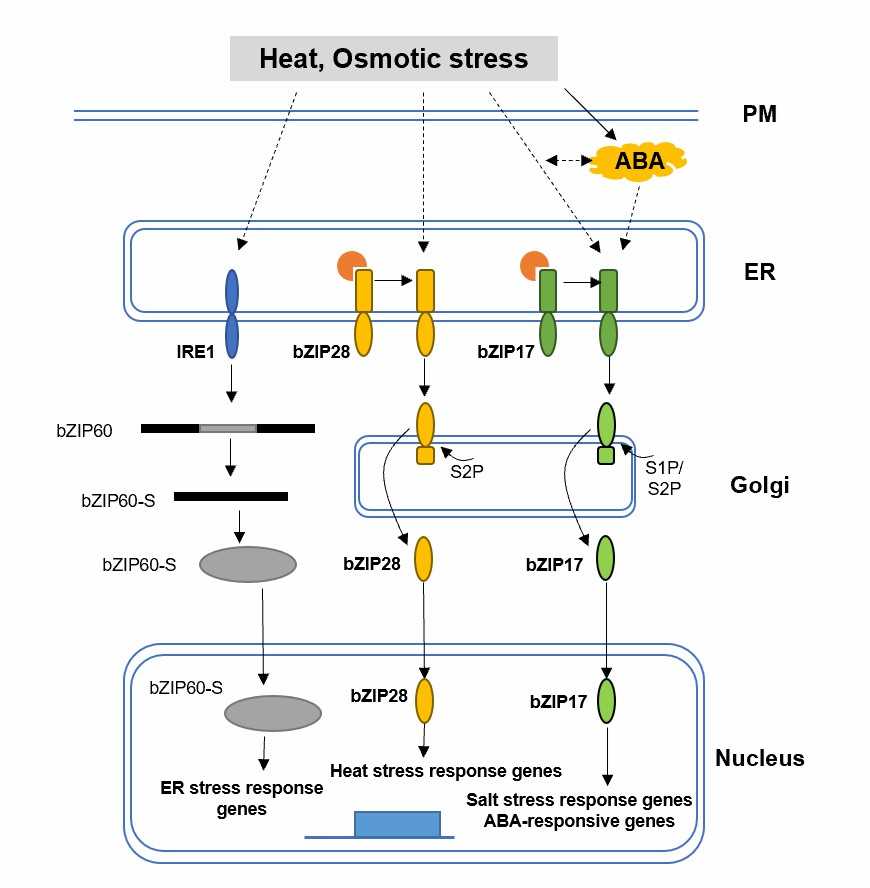Analysis of Plant Endoplasmic Reticulum Involved in Biotic and Abiotic Stress
To adapt to changing environmental conditions, plants have evolved complex tolerance mechanisms to integrate various stress signals and help plant growth and development. It is well known that the plant endomembrane system plays an important role in maintaining cellular homeostasis in response to environmental stress. Endoplasmic reticulum (ER) is one of the largest, most complex, and structurally variable organelles found in eukaryotic cells. It is a central organelle involved in lipid metabolism, Ca2+ homeostasis, and the synthesis and folding of secreted and transmembrane proteins, which are essential for sensing and transducing environmental signals.
Lifeasible, as a leading global company, is committed to helping our customers achieve effective and successful research. We provide an analysis of the plant endoplasmic reticulum involved in biotic and abiotic stress, including innate immunity, salt stress, heat stress, AB pathway, and others. We always deliver reliable results and reports on time to our customers worldwide.
- Most studies of plant environmental adaptation have focused on biotic or abiotic stress factors to understand plant defense mechanisms against individual stresses.
- Lifeasible provides analysis of plant endoplasmic reticulum involved in biotic stress, including RNA viruses and other pathogen infections.
- Plant innate immunity is mediated by the cell membrane and intracellular immune receptors that function in distinct and overlapping cellular signaling pathways to activate defense responses. It is becoming increasingly clear that immune receptors rely on components from multiple organelles to generate an appropriate defense response.
- Lifeasible helps our client analyze the components of ER during an innate immune response, such as ER chaperones, lectin chaperone complex, BiP chaperone complex, resident Ca2+ pumps, and other derived chaperones.
- Salinity is one of the most limiting environmental stresses on crop productivity globally, so salinity stress leads to changes in many physiological and metabolic processes. However, the extent of these changes varies according to the strength and length of the stress exposed.
- Salt stress often induces ER stress in many plant species. We mainly provide the following points to help our clients in their research, including ER membrane-related transcription factors, unfolded protein response components and plant-specific transcription factors.
 Fig.1 ER stress responses to heat, osmotic stress, and stress-related hormones in plants.
Fig.1 ER stress responses to heat, osmotic stress, and stress-related hormones in plants.
- Due to climate change, high temperatures have a negative impact on plant growth and metabolism. Plants can sense changes in ambient temperature and activate a series of molecular changes.
- We primarily help investigate heat stress sensors, including unfolded protein response sensors in the endoplasmic reticulum and heat-responsive histone variants, which trigger several downstream signaling pathways to mitigate the adverse effects of heat stress.
- ABA regulates many aspects of plant growth and development, so it plays a central role in response to abiotic stress.
- We mainly provide services in the activation mechanism of bZIP17, which triggers ABA signaling in response to ER stress.
Lifeasible is always devoted to providing high-quality and satisfactory service to our customers. If you are interested in our services or have any questions, please feel free to contact us or make an online inquiry.
For research or industrial raw materials, not for personal medical use!
 Fig.1 ER stress responses to heat, osmotic stress, and stress-related hormones in plants.
Fig.1 ER stress responses to heat, osmotic stress, and stress-related hormones in plants.